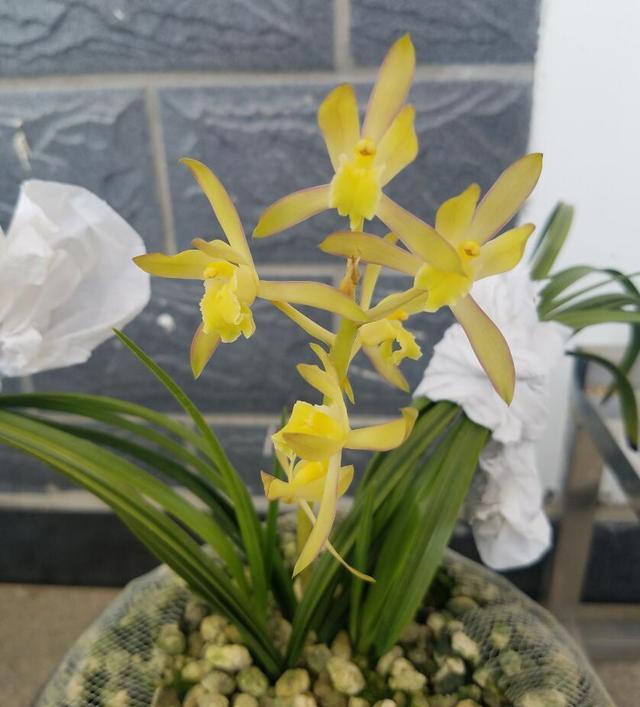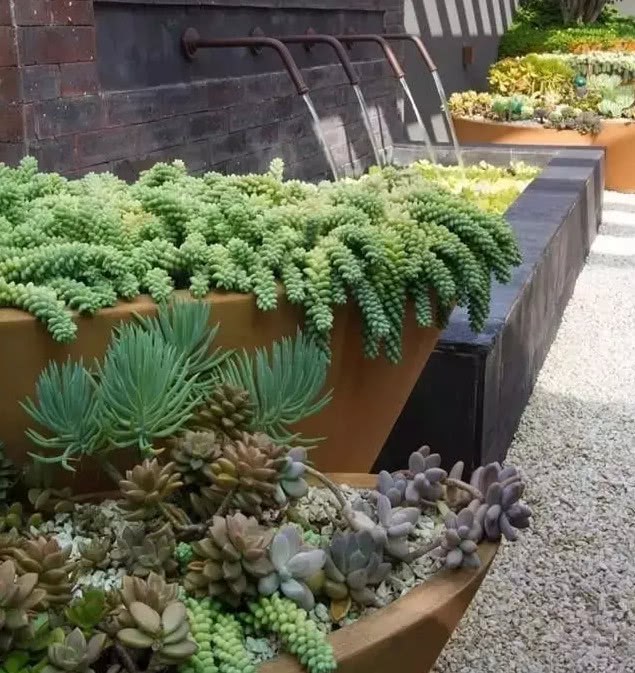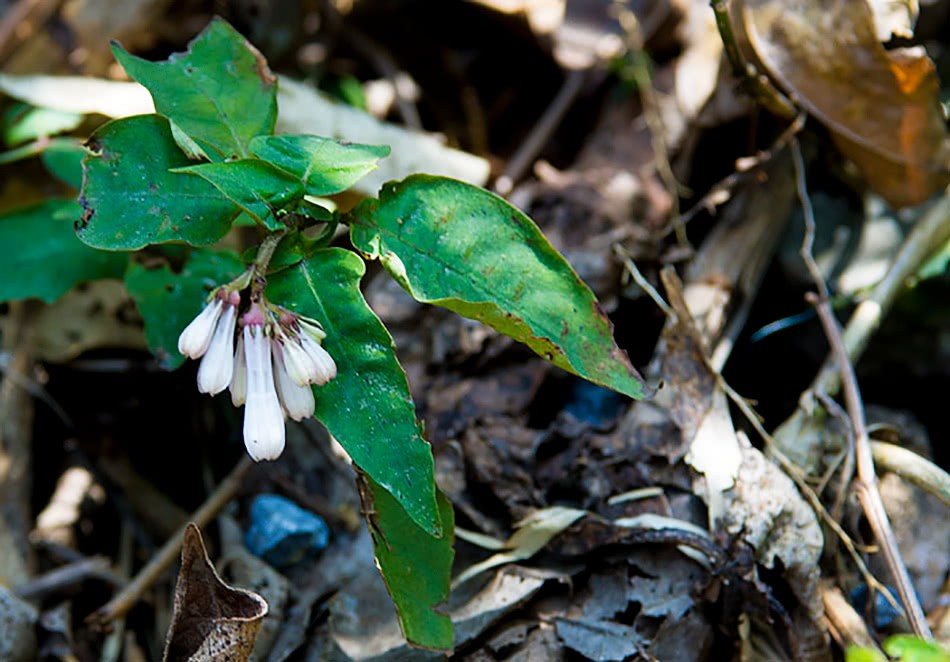It is this article that explains the temperature and humidity of orchids so thoroughly.

I. the best growing environment for orchids.
The best temperature for orchid growth is 15 ℃-25 ℃. If the temperature is higher than 30 ℃, the orchid will grow slowly or stop. The orchid grows well when the air relative humidity is 60-70%, and it is easy to cause orchid disease if it is too dry or too wet. During the summer growth period, the humidity is required to be no less than 70%. The humidity requirement of the orchid is regular, the humidity demand increases during the growing period, decreases during the dormant period, and increases during daytime. Humidity demand is reduced at night!
Second, what is the effect of temperature on the growth of orchids
The main results are as follows: 1. Orchids can grow only in a certain temperature range, and the effect of temperature on the growth of orchids is comprehensive. it can not only affect the metabolic processes such as photosynthesis, respiration and transpiration, but also affect the growth of orchids by affecting the synthesis and transport of organic compounds, soil temperature and air temperature, and the absorption and transport of water and fertilizer.
2. Because the activities of enzymes involved in metabolism vary at different temperatures, the effect of temperature on the growth of orchids has the lowest, the most suitable and the highest temperature. Orchids can only grow in the lowest and highest temperature range. Although the optimum temperature for growth refers to the temperature at which the orchid grows fastest, it is not the most robust temperature for orchid growth, because at the optimum temperature, the organic matter in the orchid is consumed too much, and the plant grows slender and weak. Therefore, in planting practice, the cultivation of robust plants often requires a temperature lower than the optimum temperature, which is called the coordinated optimum temperature. In addition, the temperature of orchids varies with organs and growth stages. In general, the temperature of root growth is lower than that of buds.
3. The experimental data of artificial climate room show that the vegetative growth of orchids is the best in the periodic changes of higher temperature in daytime and lower temperature at night. Under natural conditions, there is also a periodic variation of higher daily temperature and lower night temperature. The response of orchids to this periodic change of diurnal temperature is called the growth temperature cycle phenomenon of orchids.
4. The reason why the higher day temperature and lower night temperature can promote the vegetative growth of orchids is mainly due to the higher temperature in daytime, which is beneficial to the increase of photosynthetic rate under strong light, which provides sufficient substances for the growth of orchids, and the decrease of night temperature can reduce the consumption of organic matter caused by respiration. In addition, lower night temperature is beneficial to root growth and cytokinin synthesis, thus increasing the growth rate of the whole orchid. In greenhouse or greenhouse cultivation, attention should be paid to changing the day and night temperature, so that under natural conditions, the effects of water, light, temperature and other factors on the growth of orchids are cross and comprehensive. First of all, the environmental factors influence each other. For example, overcast and rainy days, dim light, decreased temperature, increased soil moisture, poor soil ventilation and other reactions will occur in a chain, affecting the growth of orchids. Secondly, various environmental factors act on the orchid body, and are closely related to life activities, and they will also affect each other. For example, light promotes photosynthesis, photosynthesis affects transpiration, and transpiration affects water supply. They promote and restrict each other. In orchid planting, attention should be paid to the special effects of various environmental conditions on individual physiological activities of growth, and the viewpoint of dividing into two should be used to grasp the principal contradiction and take reasonable measures in order to properly promote and restrain the growth of orchids. To achieve the purpose of cultivation.
Third, what is the effect of air humidity on the growth of orchids
1. Air humidity affects the transpiration of orchids. Transpiration is not only the power of water absorption, but also the power of orchid nutrition transportation. when the air humidity is high and the transpiration is weak, the ability of orchid nutrition transport decreases. Transpiration can also adjust the temperature of the leaves. If the temperature is high, the air humidity is high, and the transpiration is weak, the leaves may be burned. The effect on transpiration will indirectly affect the dry-wet alternation of basin soil, which is not conducive to fertilizer and water management; if the air humidity is too low for a long time, it will cause leaf edge and tip necrosis, mainly because the water vapor pressure inside the leaf cavity is too different from the external water vapor pressure, resulting in insufficient water vapor supply inside the leaf and necrosis.
2. The air humidity affects the opening and closing of stomata in orchid leaves. Too much or too little air humidity will lead to stomatal closure, orchid stomata closure, carbon dioxide can not enter mesophyll cells, photosynthesis slows down or even stops.
3. Excessive air humidity is conducive to the reproduction of bacteria, most fungal spore germination and hyphae development need higher humidity, too low is conducive to the occurrence of insect pests, such as red spiders and other mites generally occur in the environment of high temperature and low humidity.
4. High humidity will make the foliar water condense, cause the foliar cells to break, and make the plant weak at the same time.
Orchid temperature of the three basic points I can not find the relevant specific information, personal reference to Dendrobium and other plants to give the following data for your reference, the lowest temperature 6-15 ℃, the most suitable temperature 15-30 ℃, the highest temperature 30-45 ℃, I do not know whether accurate, there must be differences between different orchids, but also hope relevant professionals to see the answer! Author: Mei Fei, founder of Orchid Bar Forum, Secretary of Orchid Association of Jingshan City, Hubei Province, online celebrities of orchid industry on major self-media platforms! I will publish orchid knowledge and pictures every day, take you in-depth understanding of orchids, teach you to easily raise orchids, you can always ask me or leave a message below if you don't understand orchids, if you like, you can follow me or collect or forward to help others!
- Prev

There is a courtyard that only grows succulent plants is so wayward.
Life is not only about living, but also about the poetic life and distance like a courtyard. A succulent courtyard is a way for you to approach poetry and distance. There is a courtyard, only grow succulent, is so capricious! Every woman may have had this before.
- Next

This kind of weed in the mountains grows in places infested by snakes. When snakes see them, they are afraid of being called black spearheads by the people.
Most areas are hot in summer now, but in some parts of southern China, summer is relatively hot and humid, such as in the mountains of Sichuan, western Hubei, Guizhou and Yunnan, so it is time for summer in these areas.
Related
- Wuhan Hospital Iron Tree Blooming Result Was Instantly Frightened by the Gardener Master
- Which variety of camellia is the most fragrant and best? Which one do you like best?
- What is the small blue coat, the breeding methods and matters needing attention of the succulent plant
- Dormancy time and maintenance management of succulent plants during dormancy
- Minas succulent how to raise, Minas succulent plant pictures
- What are the varieties of winter succulent plants
- How to raise succulent plants in twelve rolls? let's take a look at some experience of breeding twelve rolls.
- Attention should be paid to water control for succulent plants during dormant period (winter and summer)
- Watering experience of twelve rolls of succulent plants
- Techniques for fertilizing succulent plants. An article will let you know how to fertilize succulent plants.

